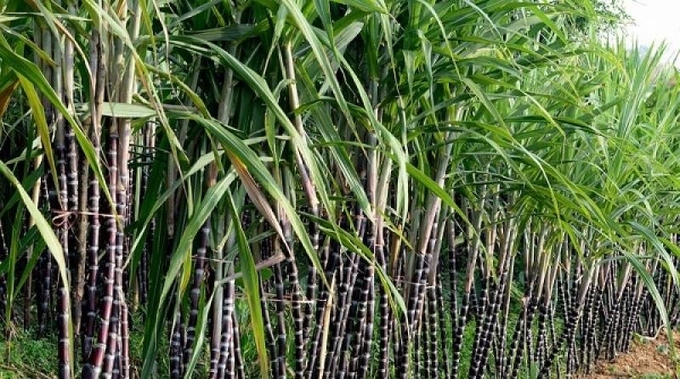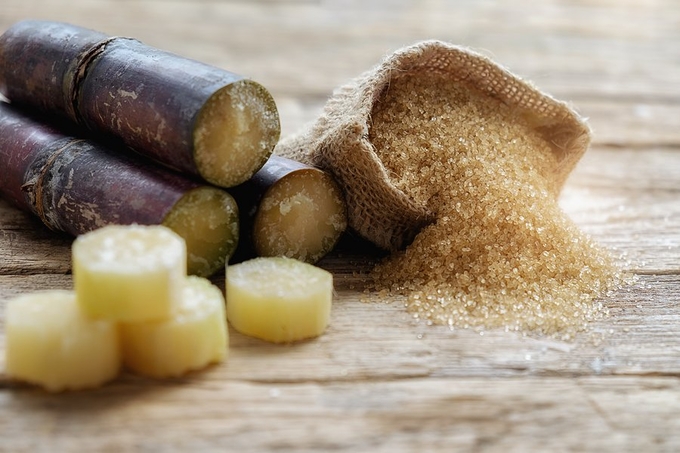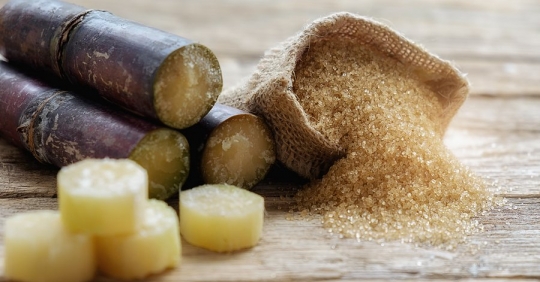On September 23, 2022, the Minister of Industry and Trade allocated import tariff quotas for sugar products by auction in 2022 with a total volume of 113,000 tons. This is seen as the latest move by the state to help the sugar industry solve the near-term domestic sugar shortage. However, is this figure a reasonable norm in the face of a serious shortage when domestic demand is estimated at almost 2 million tons/year but only 747,000 tons of sugar are produced at the end of the 2021-2022 pressing season.

The bottleneck of Vietnam’s sugar industry when it constantly faces deficit
As of September 30, 2022, the Vietnamese sugar industry has completed the 2021-2022 sugar cane harvest. By the end of the harvest, the entire industry has pressed 7.5 million tons of sugar cane to produce nearly 747,000 tons of sugar, while domestic consumption is estimated at nearly 2 million tons per year. Cane sugar thus covers only 37% of domestic demand.
In the medium and long term, the recovery of raw material areas is still the top priority for companies, because this is a fundamental and sustainable solution in international competition. However, this is not an everyday story, as the price of sugar cane in the fields in crop year 2021-2022 is actually above VND 1 million/ton in many areas, the price of raw cane has increased, farmers have signaled to switch back to sugar cane, but the sugar production of the whole country in the 2021-2022 harvest also increased by only 11.64% compared to the 2020-2021 harvest. In particular, due to the decline in the area of raw cane, the price of sugar, the rise in price of sugar cane, and the unhealthy competition in purchasing raw cane among sugar mills from the “underground” policies that have reappeared in many regions, it has further disrupted the link between sugar mills and sugar cane farmers and destabilized the development of concentrated sugar cane areas.
Meanwhile, the period of the third and fourth quarters is the time when the demand for industrial sugar increases for the production of confectionery to mark the Mid-Autumn Festival and the preparation of goods for the Lunar New Year. While the mills’ sugar cane press season usually begins in December, this has resulted in a lack of ‘seed borders’ – stocks have fallen without entering the press season.
Increased demand coupled with supply chain difficulties and costs incurred in the wake of the Covid-19 pandemic have created a “bottleneck” for the sugar industry, reflected in the sharp rise in domestic sugar prices over the past period when demand exceeds supply. This situation will have a negative impact on the sugar industry, the internal market and consumers, and will create loopholes for contraband sugar.
The world is facing a serious food crisis
With the world facing the risk of a serious food crisis, food security and modernization of agriculture must be even more of a priority. The trend of hoarding food and goods, especially essentials like sugar, remains a concern.
The outlook for world sugar supply and demand for sugar over the next 5 years is expected to range from equilibrium to shortage, unlikely to result in as large a surplus as in previous sugar industry cycles. In addition, inflation is increasing production costs, with transport and fertilizer fees outpacing the increase, pushing sugar prices further up (world sugar prices hit 20.3 cents/lb in April, a 5-year high). At present, global supply is also constrained, when Brazil’s production could fall to 29 million tons in the 2022-2023 harvest, compared to the original forecast of 32.8 million tons, China’s sugar production is also expected to fall. In addition, the Indian government has also officially decided to limit sugar exports to 10 million tons in crop year 2021-2022 to ensure supply. The global supply chain is expected to remain difficult until the end of 2022.

The trend of hoarding food and goods, especially essentials like sugar, remains a concern from danger food crisis.
Eliminate immediate difficulties
After the ATIGA integration, the domestic sugar market is still young to be able to “swim” in international competition when only 26/41 factories are still in operation.
With the role and instrument of macroeconomic regulation, the Trade Remedie Tax is an appropriate policy of the state to help the sugar industry recover and compete fairly with international friends in the medium term. At the same time, the tariff quota auction is considered a useful tool to solve the short-term difficulties faced by companies when the supply from the raw materials sector has not recovered and production activities are not covered. The timely implementation of tariff quota auctions not only helps to increase the state budget, creates conditions for domestic sugar cane companies to supplement the supply of raw materials, but also helps to meet the growing demand of sugar cane companies.
In the current shortage situation, the Ministry of Industry and Trade has set the 2022 tariff quota at 113,000 tons, of which 79,000 tons are raw sugar and 34,000 tons are refined sugar. This short-term quota level will help supplement raw materials, promote the operational efficiency of domestic manufacturing enterprises, thereby solving the lack of supply and high prices, and demand for sugar year there was a sudden surge. However, in view of a severe supply shortage and an expected increase in production demand at the end of the year, the quota in 2022 covers only half a month of national consumption as well as the salt disposed of in the long term. Domestic companies have also taken steps to propose additional import tariff quotas for sugar products. In particular, the Vietnam Dairy Products Association recently sent an official letter to Deputy Prime Minister Le Van Thanh proposing this issue to ensure demand for sugar ingredients across the country. TPL Association. Ho Chi Minh City has also sent an official message to the government and relevant ministries and branches, proposing to consider holding at least two additional quota tenders in early 2022.
Quota auctions, while ‘doing more good than harm’, still need strict government regulation to ensure they are a catalyst for the development of the sugar industry and help to balance the interests of stakeholders in the sugarcane supply chain. In addition, companies and farmers also need to build trust and cooperation mechanisms to develop the core competitiveness into a truly “self-sufficient” home in the global game as quickly as possible.

